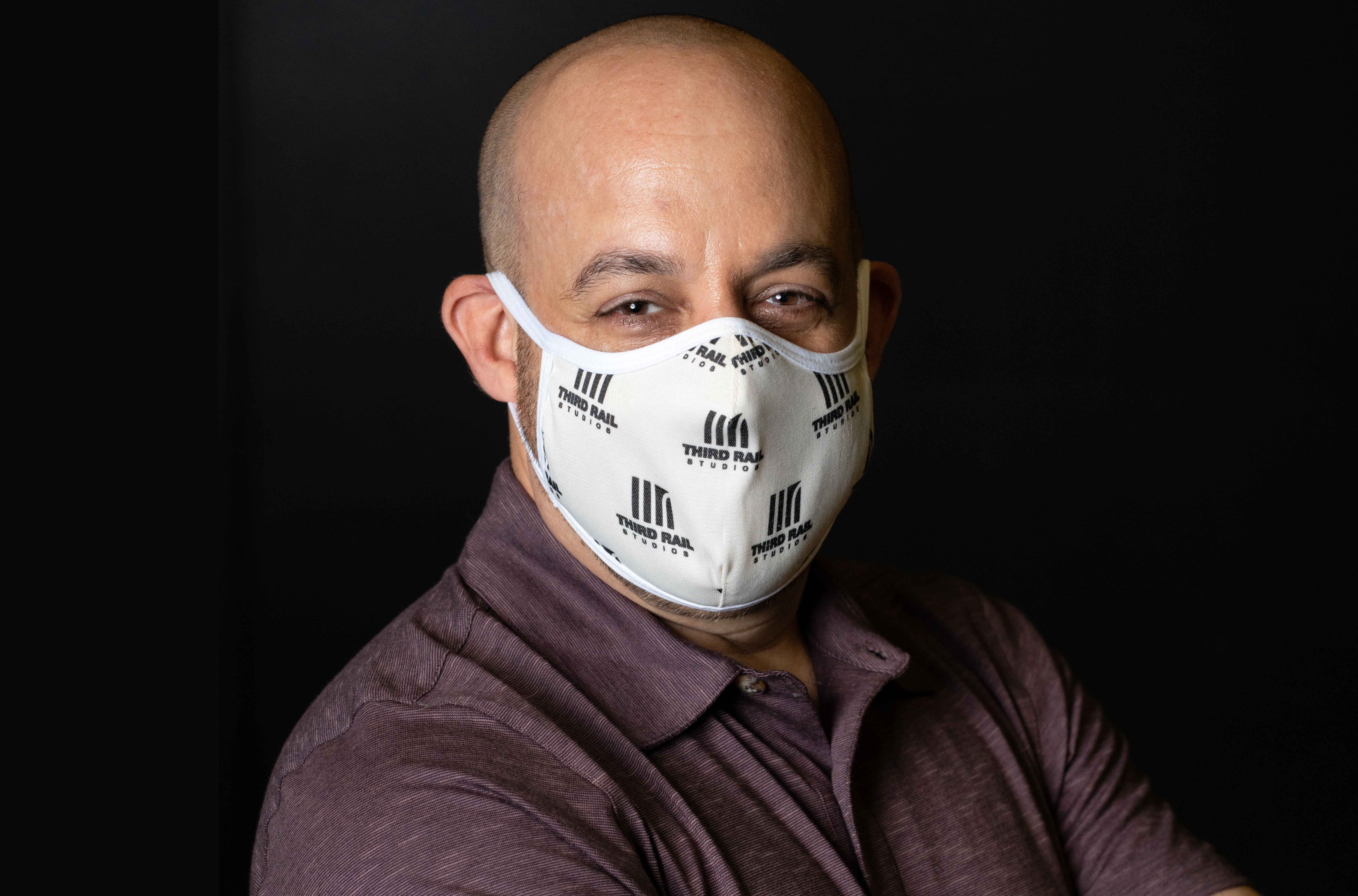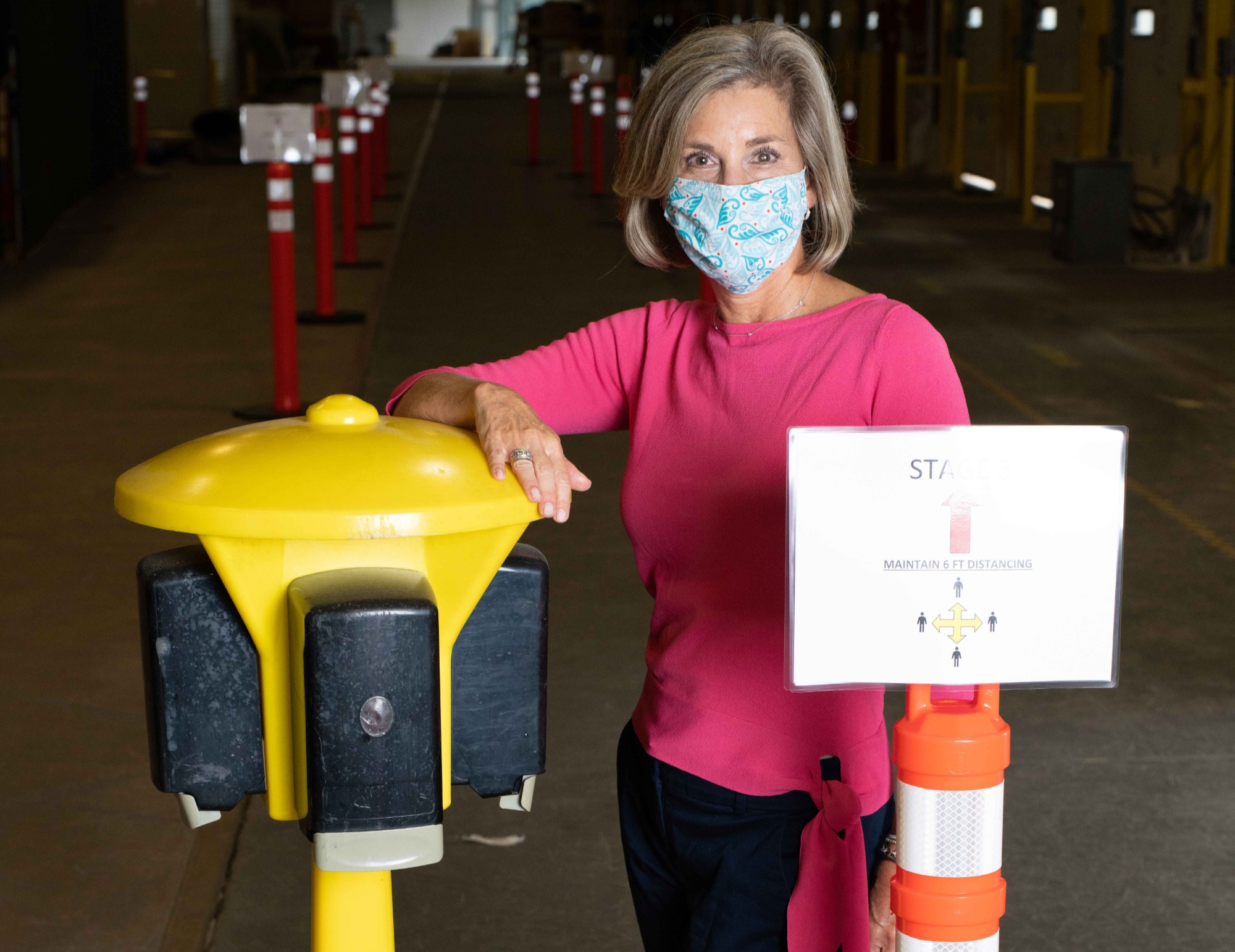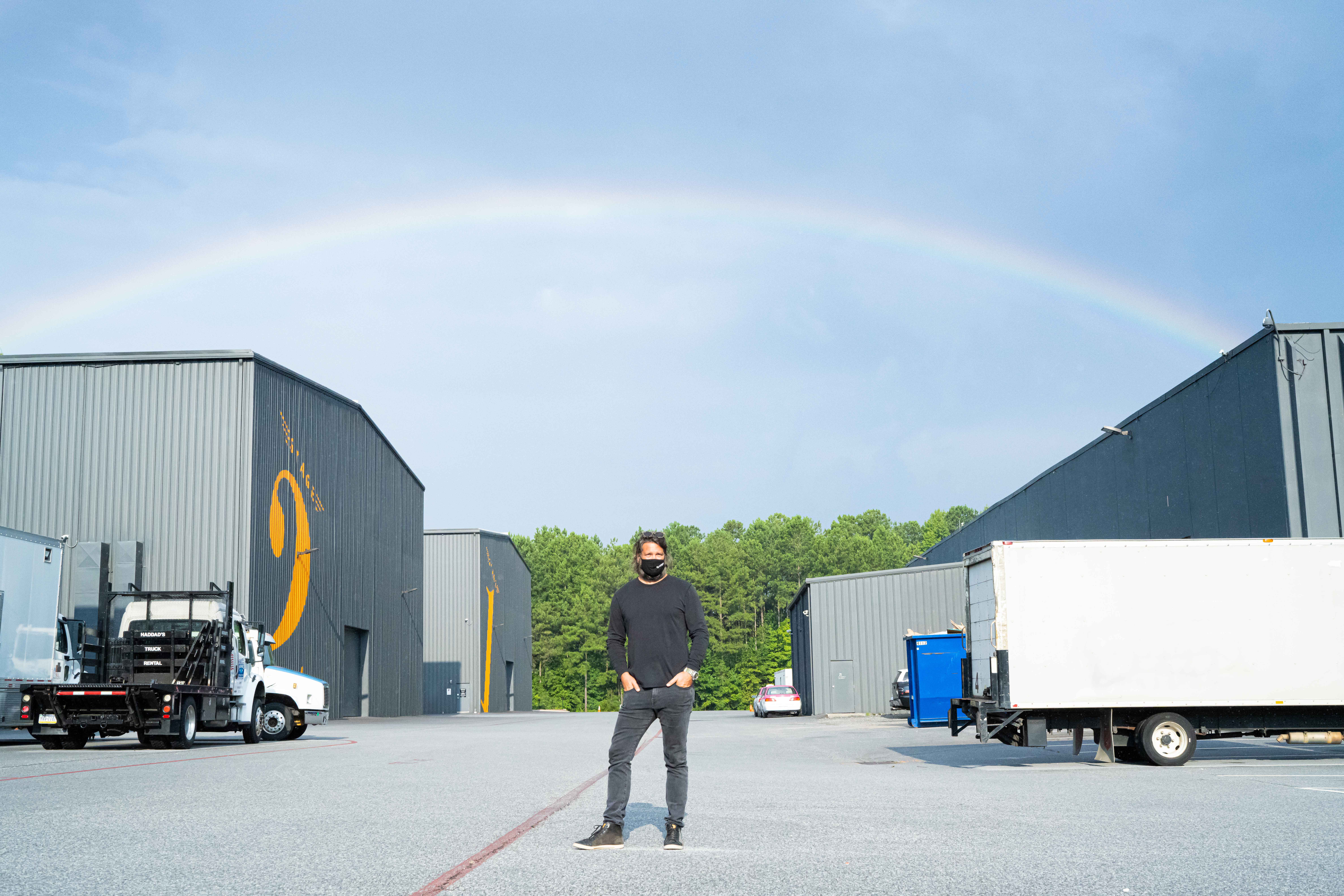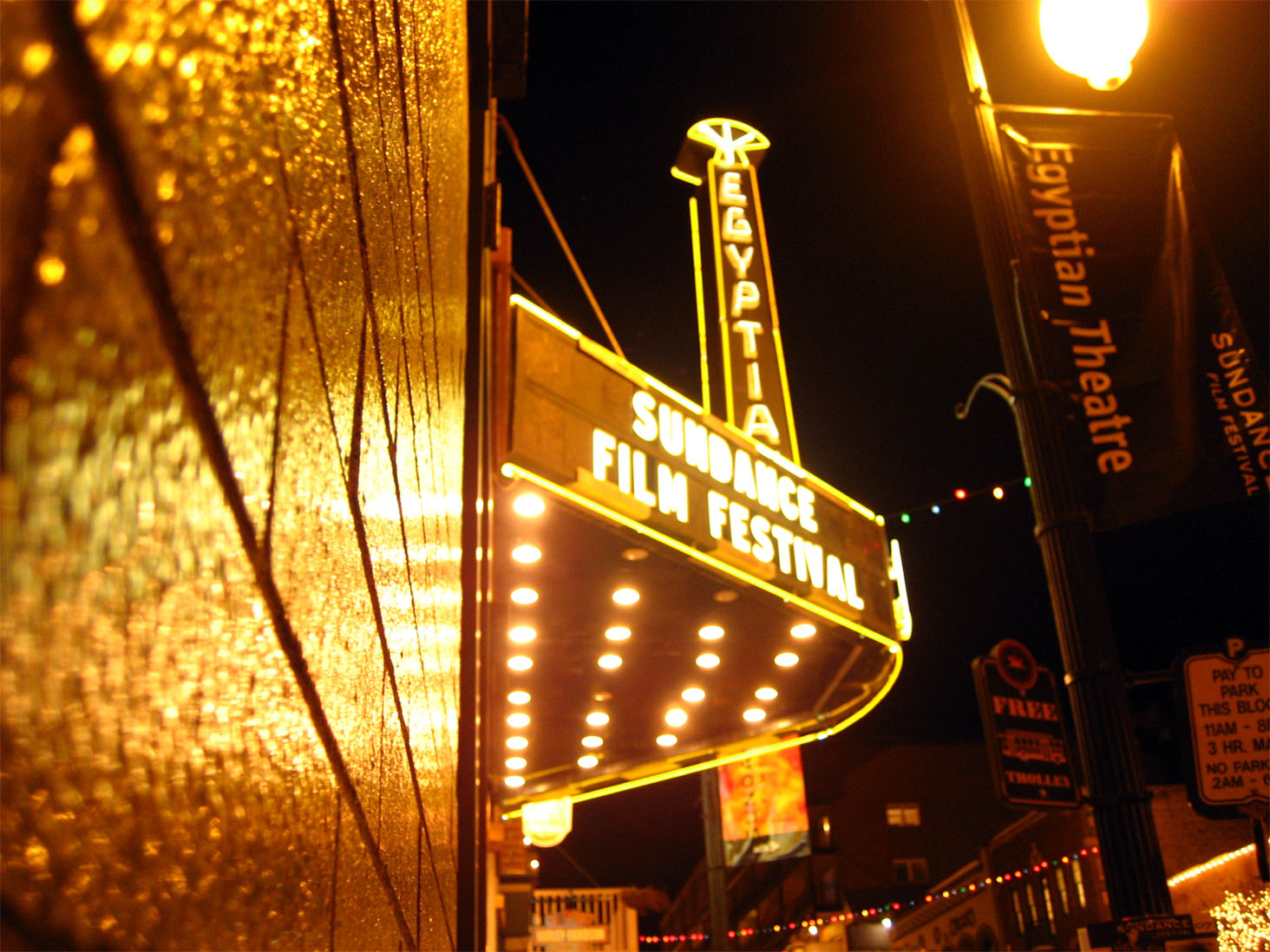BEFORE THE QUIET CAME…

A Sony production was moving into Third Rail Studios. Their move-in process began in January, and they were building sets by February with the intention of shooting a film slated to be released in 2021. However, with coronavirus cases on the rise in the United States, Sony’s chairman ended up pulling the plug on working at Third Rail in order to move the entire production to Canada.
“[It was] obviously a direct result of the spike in cases when things started to open up again,” Dan Rosenfelt, President of Third Rail, told Oz. Despite providing Sony with a discount on their hiatus from the offices and purpose built studios, the production still had to move forward. “It was a pretty concrete example of a movie that had to leave the US because it couldn’t afford to push because of their actors’ schedules; it couldn’t push anymore than it already had.”
In the meantime, Third Rail has had several potential productions floating around. “They’re getting their ducks in a row and working on their COVID-19 safety protocols and their plans and we’re close to getting a show that’ll move in very soon,” Rosenfelt added. When the pandemic first hit, Rosenfelt was prepared for a scenario in which people would not cope well with quarantining. “I had a sense it was going to be prolonged,” he said. “I had a sense that people would have difficulty accepting isolation.”
Third Rail employees have been able to work from home, which means the studios have been near empty. “Obviously having productions in our studio campus is our bread and butter and that’s all we do, so to see a production leave and having no one around, it’s a scary thing,” Rosenfelt said. While it’s inevitable that some productions will pick up and go elsewhere, Rosenfelt remains hopeful and doesn’t believe this pandemic will do enough damage to change the course of the Georgia film industry. “I don’t think there’s going to be a wave of projects that fly the coop or decide not to come.”
“There are a lot of factors involved that are not just safety but also: How do actors feel about it? How does the director feel? Can they safely get it done?” Rosenfelt said.
“THE MASK ISSUE IS ONE THAT WE NEED TO TAKE SERIOUSLY –
WEARING A MASK IS BETTER THAN NOT WEARING ONE. PERIOD.”
-DAN ROSENFELT, PRESIDENT OF THIRD RAIL STUDIOS
TESTING, A LOT OF TESTING
Beth Talbert, Vice President of Studio Operations at Eagle Rock Studios, sat at her desk at Eagle Rock’s facilities, about seven miles away from Third Rail. She picked up a video call from Oz, her mask placed below her chin, and assured that there was no one else in the office. Eagle Rock is five years old; the facility covers over 10 acres of land. Talbert told Oz that the studios were built to be a very safe and protective environment. However, she was very clear when explaining that – no matter how old or new the studio – none of these facilities are liable if a production is exposed to or has an outbreak of the virus.

“Every facility’s going to state that very clearly: ‘You’re entering this building at your own risk,” Talbert said. “It’s like if you live in an apartment building, right? Your landlord’s not going to tell you that he’s going to keep you safe from COVID.”
Gov. Brian Kemp signed the legislation S.B. 359, which limits liability claims brought by customers, employees, or members of the public who contract or allege exposure to the coronavirus. The law took effect in August and is set to expire in July 2021.
According to a report in Bloomberg Law, the new liability shield law has made Georgia the most recent and most populous state to protect businesses and other organizations from potential lawsuits in the case of COVID-19 exposure. Under this new law, liability claims are only allowed to succeed in cases where the business or other organization showed gross negligence or similar disregard for health and safety standards. “We’re following all of this,” Talbert said, she lifted up a stack of papers towards her computer’s webcam.
“We’re following AMPTP (Alliance of Motion Picture and Television Producers) White Paper … [and] the joint report of the DGA, SAG-AFTRA, IATSE, and Teamsters committee for COVID-19 safety.”
The AMPTP White Paper is a 22-page document with the words, “Industry-Wide Labor-Management Safety Committee Task Force” in large white letters on its title slide. The DGA, SAG-AFTRA, IATSE, and Teamsters document is titled, “The Safe Way Forward,” and is a lengthier document at 37 pages. Both documents provide necessary guidelines and protocols that address the many elements of production and the circumstances under which production can safely and effectively resume.
The White Paper is broken down into several sections:
• Guiding principles
• Reopening process
• Infection control
• Protecting & supporting cast & crew health and safety
• Physical Distancing
• Training and education
“Several elements of the protocols, including testing and PPE, are subject to further discussion and agreement between the Employers and the Unions and Guilds representing the cast and crew,” the introduction of the White Paper reads.
The Industry White Paper, which was released to the Governors of New York and California, was followed by “The Safe Way Forward,” which was initially drafted by a DGA (Directors Guild of America) committee of working members, based on close consultation with infectious disease epidemiologists and other experts.
In the “The Safe Way Forward,” experts agree that the coronavirus isn’t just an easily transmitted virus, but that “a working film set provides an exceptional opportunity for virus spread.” So how does one mitigate the risk of people getting sick? “Testing. A lot of testing,” the document reads. Both documents repeatedly point out that consistent testing is the most effective option for preventing infection during production. “The Safe Way Forward” elaborates on a physical distancing concept addressed in the White Paper, labeling it as “The Zone System.”
Productions consist of three zones: A, B, and C:
• ZONE A is any perimeter within which activity occurs without physical distancing or the use of PPE.” Zone A is essentially a bubble that encases the most vulnerable people, like the cast. “In most cases, this will mean performers working on set with no protection alongside crew.” Personnel in Zone A are recommended to be tested three times a week at minimum, with the understanding that certain circumstances may require daily testing, such as filming scenes that require intimate contact.
• ZONE B is everywhere the production has a footprint that is not Zone A,” the packet continues. “Use of PPE and stringent physical distancing practices are observed and enforced within Zone B.” This can include a production office, base camp, a sound stage, and more. “Think of it this way,” the packet reads, “From door to door, people working in Zone A travel along a cocooned path – sometimes involving multiple Zone As – laid out and controlled by people in Zone B.”
• ZONE C is the outside world: homes, hotels, or anywhere employed members of the production go when they aren’t working. “Success in a safe return to work will also depend on cast and crew being willing and able to engage in good safety practices when at home and in areas throughout Zone C,” the packet reads. If members of production aren’t under some type of surveillance or in a contained bubble, it won’t be possible to monitor all of the safety protocols practiced in Zone C. No one can be allowed access to either Zone A or Zone B for the first time unless they have been tested and cleared within the last 24 hours.
SOLVING LOGISTICAL PROBLEMS CREATIVELY
Each studio executive told similar stories about empty facilities and exciting productions moving out in the beginning of the pandemic. In mid-March, Ryan Millsap, Chairman and CEO of Blackhall Studios, was in the midst of working with a Disney production. “We were finalizing their lease, and then the stay-at-home orders came down,” Millsap told Oz. “We were left without a lease.”




